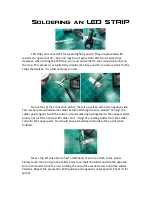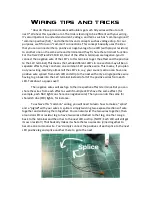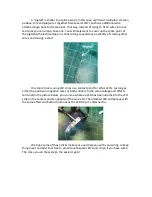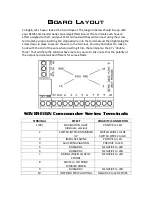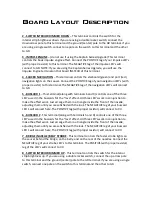
HOW TO USE THIS GUIDE
This guide is presented in a format intended to be easy to decipher for the
intermediate to advanced model builder who is passably familiar, at least, with lighting
diagrams and electrical current flow. For the beginner, this kit is certainly usable! But
you might want to take some time to gather some information and familiarize yourself
with basic terminology and knowledge on electrical diagrams and current. This is
especially true if you intend to deviate at all from the instructions for this kit.
The guide is presented in an “easy-to-read” format where the builder can simply
solder the string of lights, as marked, and connect them to the color-coded terminal
points, as marked. However, to ensure better connections, it is HIGHLY RECOMMENDED
that the model builder solder the connecting wires together whenever possible!
Terminal connections may not always be absolutely secure. Twisting the ends of wires
together may also create some issues getting good connections. It is much more
preferable to solder the end connections together whenever possible before inserting
the wires into the corresponding terminal points. If connecting only a single wire,
particularly wire wrapping wire (thin shielded wire) or magnet wire (thin coated wire),
we recommend making a tiny “hook” by carefully curving the end of the wire back on
itself to fit into the terminal. This helps to hold the wire in place so it doesn’t slip out of
the screw lock.
Ultimately, it’s up to you, the builder, to choose how best to secure your wiring.
We’ve made every possible attempt to make this process as simple as possible for
builders of all levels. But you must choose the most secure method you prefer for your
building style to ensure the best, lasting connection. We will make suggestions in the
guide to help whenever possible/necessary.
There may be some times when a group of wires do not easily fit into a terminal,
particularly on the main board. You may choose to make a “ponytail” by bringing
together all the wires for that terminal and soldering them together or using a wire nut
with a single short additional wire leading out which will connect to the terminal and
supply current to all the connected wires. Instead of, say, 4 wires going into one
terminal, you now have only the one.
A note on magnet wire and/or wire wrapping wire: Many of the solutions used for wiring LED’s in this kit
involve the use of magnet wire or wire wrapping wire, both a form a thin, highly conductive wire used to
reduce the visible profile of standard 24-28 gauge wire inside the model. Magnet wire is wonderful stuff!
But, it’s also thin and potentially fragile. Pieces prewired with magnet wire (red and green in this kit)
should be handled delicately so as not to damage the connections. Also note that, while all magnet wire
pieces included have been prepared for connection, magnet wire can be a bit challenging to “strip” to
prepare for proper connection. If your prewired LED’s with magnet wire don’t seem to be functioning,
please double check to make sure the colored wire shielding has been stripped away at its connecting
point and, if not, carefully use a #11 hobby blade to scrape away any shielding to expose wires as
necessary.







